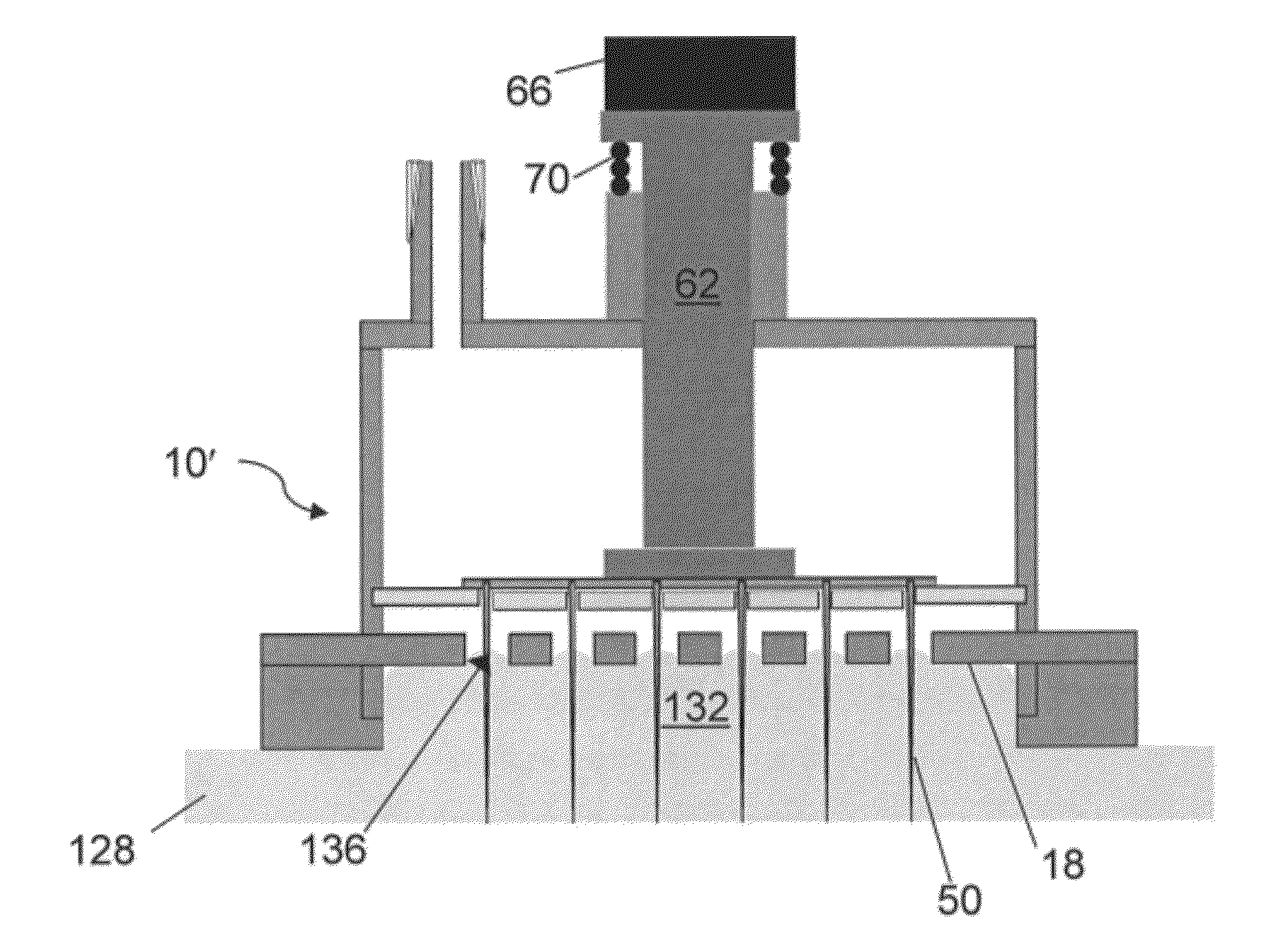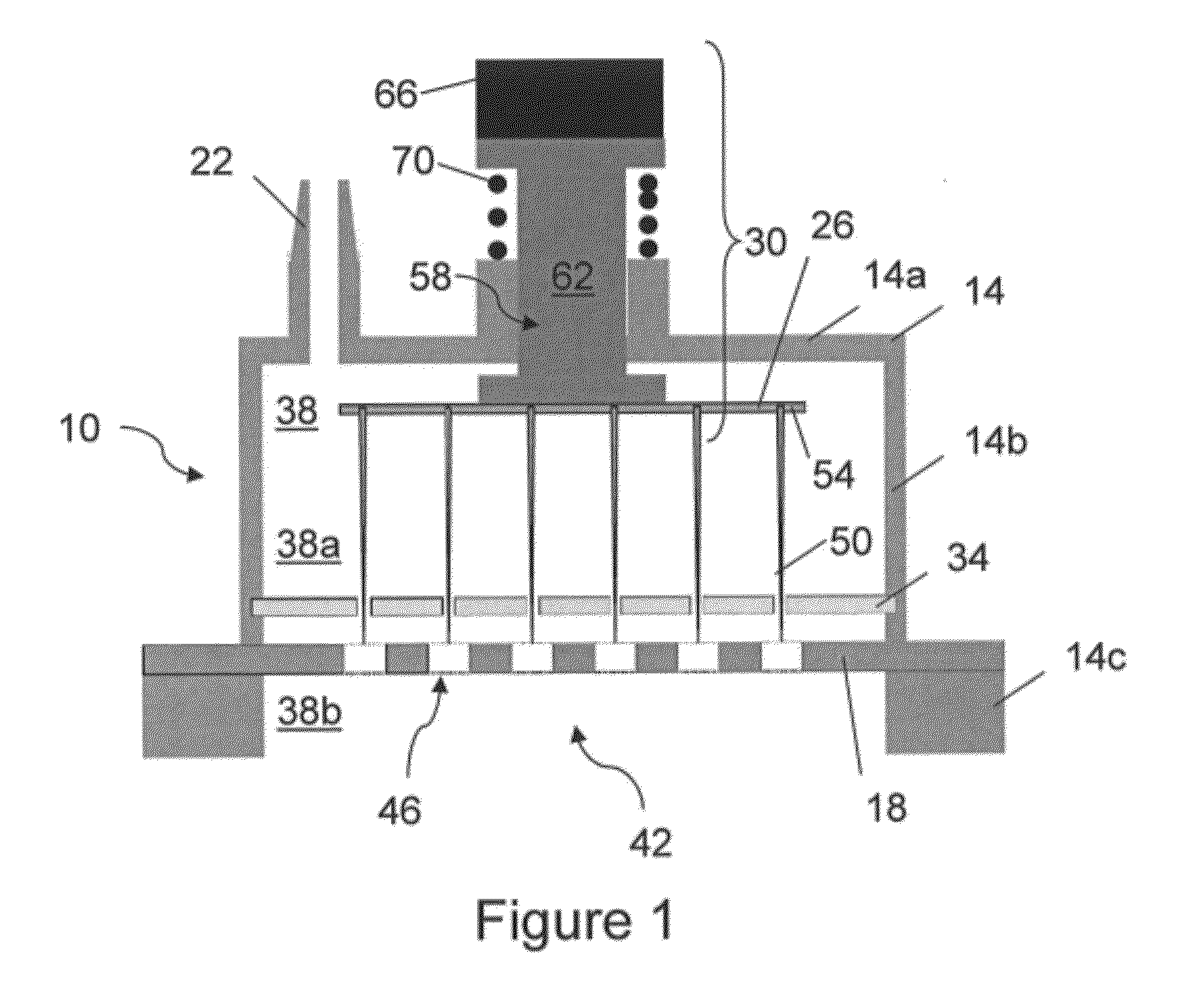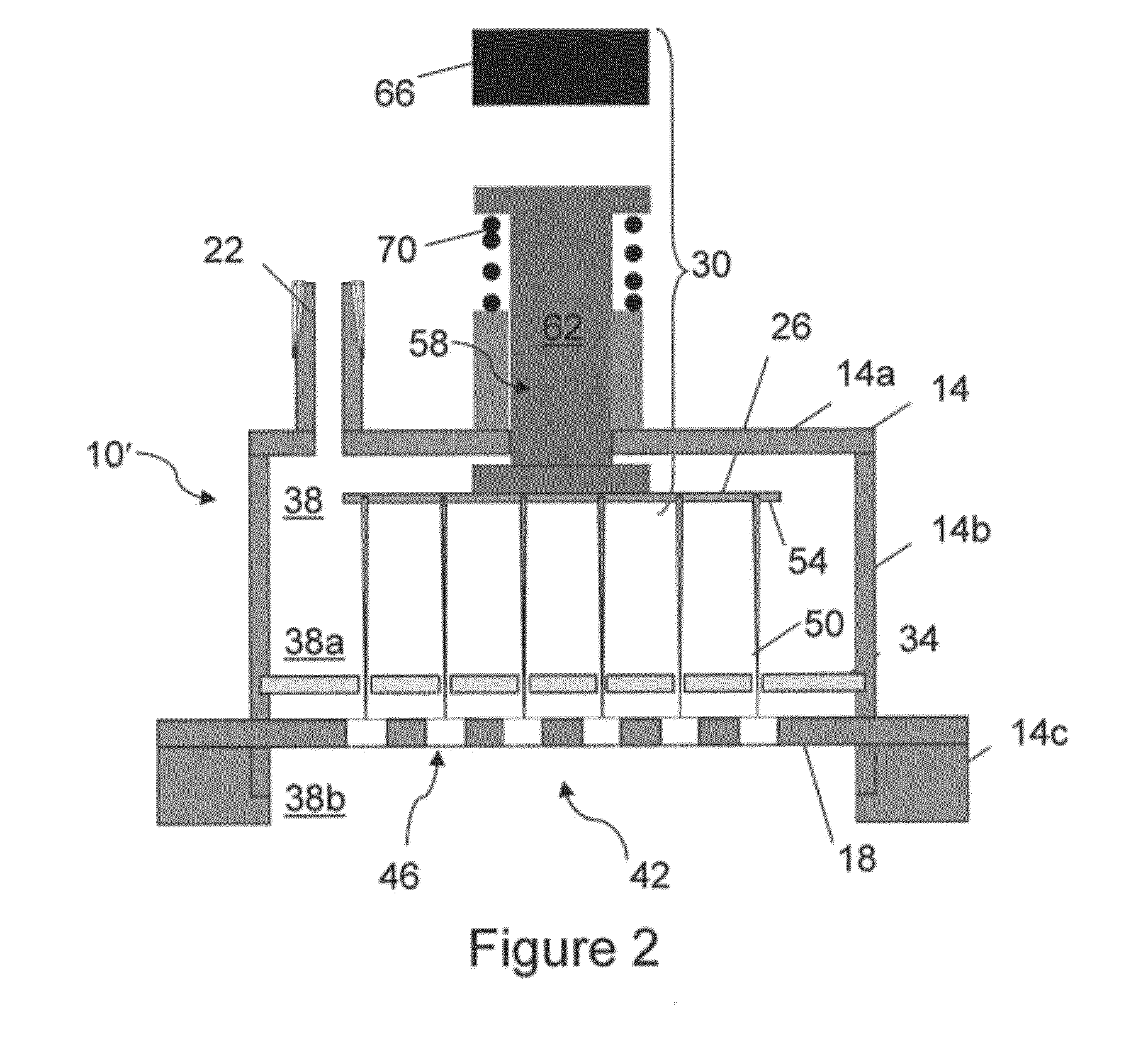Driving Microneedle Arrays into Skin and Delivering RF Energy
- Summary
- Abstract
- Description
- Claims
- Application Information
AI Technical Summary
Benefits of technology
Problems solved by technology
Method used
Image
Examples
Embodiment Construction
[0035]FIGS. 1 and 2 show apparatuses 10 and 10′, respectively, for deploying a needle array into skin. Apparatuses 10 and 10′ can be referred to as cartridges. Each apparatus includes a housing 14, a plate 18 disposed in the housing 14, a vacuum port 22, a needle array 26, an actuator mechanism 30. The needle array 26 is coupled to a source of RF energy. The apparatus can optionally include a needle guide 34.
[0036]The housing 14 defines a volume 38. The housing 14 includes a ceiling 14a and a wall 14b extending from the ceiling 14a. The wall 14b has an edge 14c for contacting the skin, and the edge 14c of the wall defines an aperture 42 in the housing 14. As illustrated in FIGS. 1 and 2, the ceiling 14a defines the vacuum port 22, which can be in fluid communication with a vacuum source. In certain embodiments, the wall 14b defines the vacuum port 22.
[0037]The plate 18 intersects the wall 14b and divides the volume 38 of the housing into two sub-volumes so that the wall 14b extends ...
PUM
 Login to View More
Login to View More Abstract
Description
Claims
Application Information
 Login to View More
Login to View More - R&D
- Intellectual Property
- Life Sciences
- Materials
- Tech Scout
- Unparalleled Data Quality
- Higher Quality Content
- 60% Fewer Hallucinations
Browse by: Latest US Patents, China's latest patents, Technical Efficacy Thesaurus, Application Domain, Technology Topic, Popular Technical Reports.
© 2025 PatSnap. All rights reserved.Legal|Privacy policy|Modern Slavery Act Transparency Statement|Sitemap|About US| Contact US: help@patsnap.com



